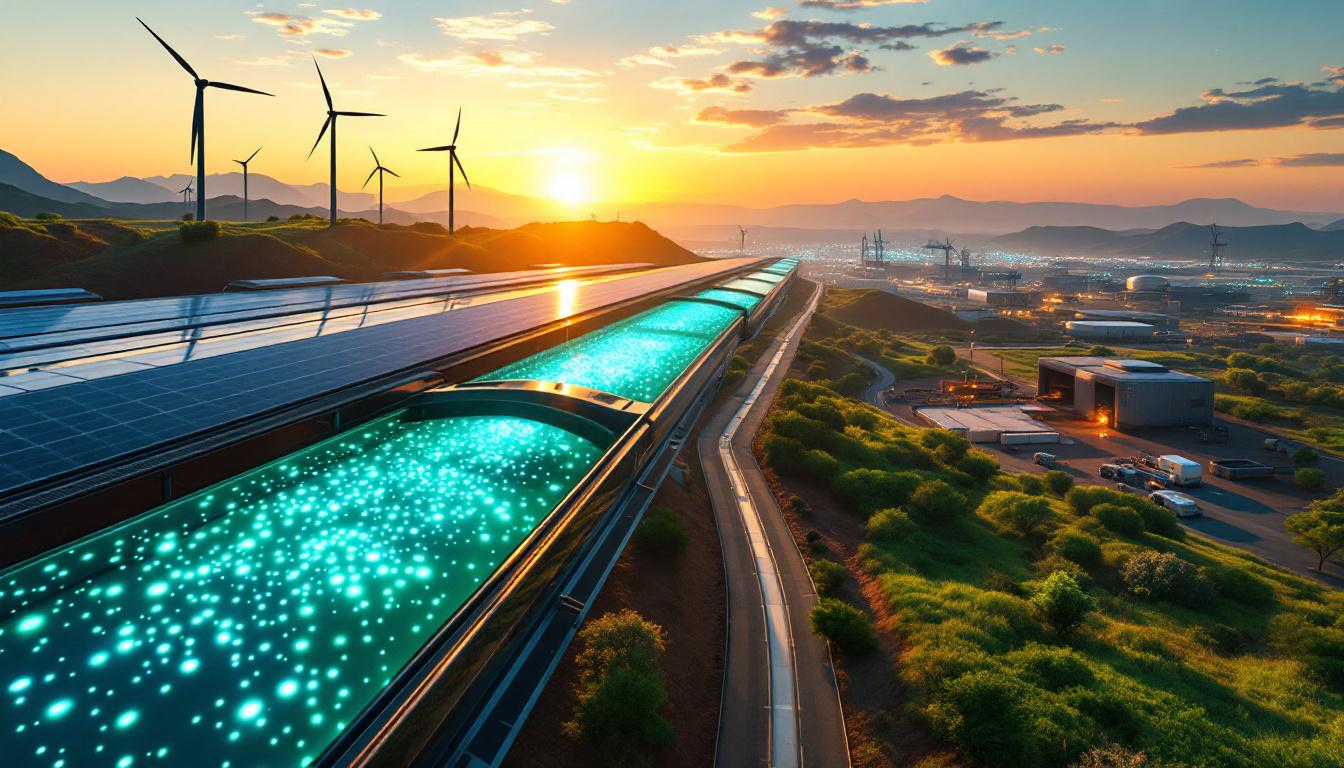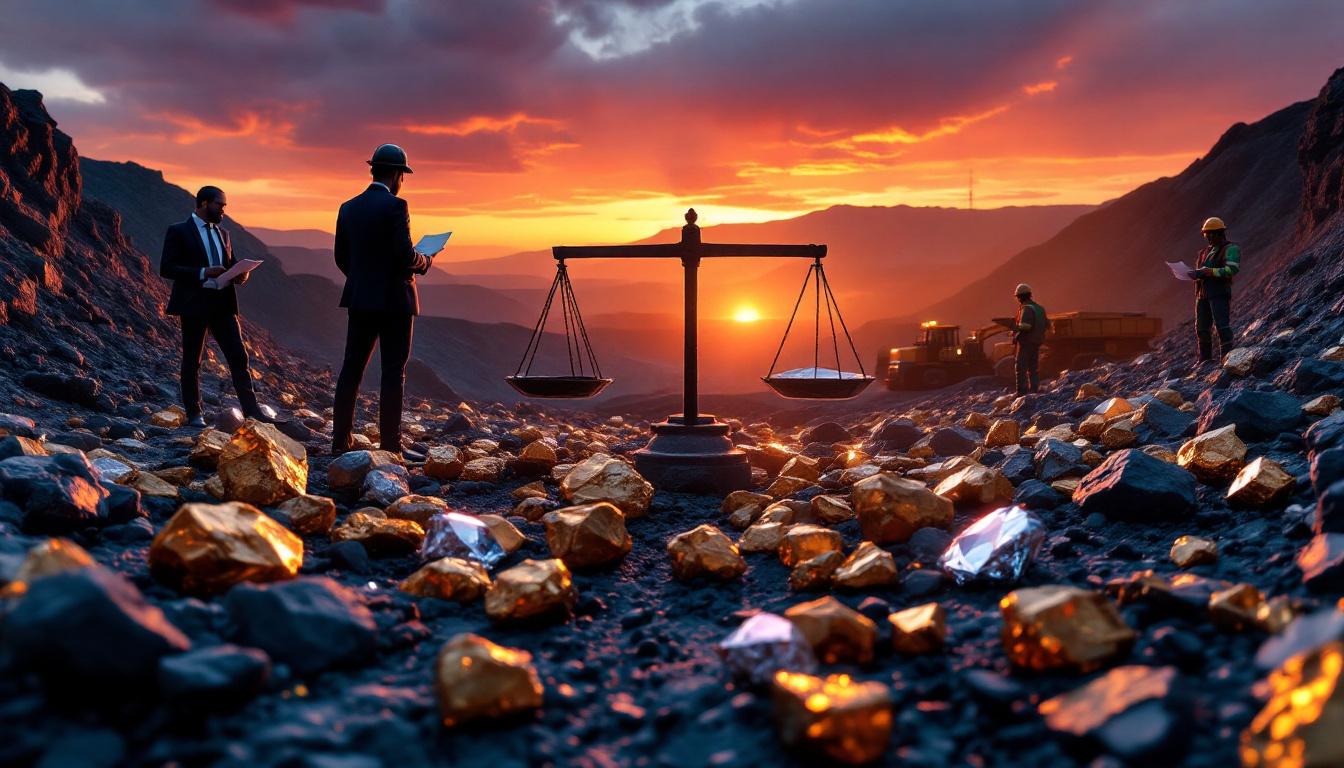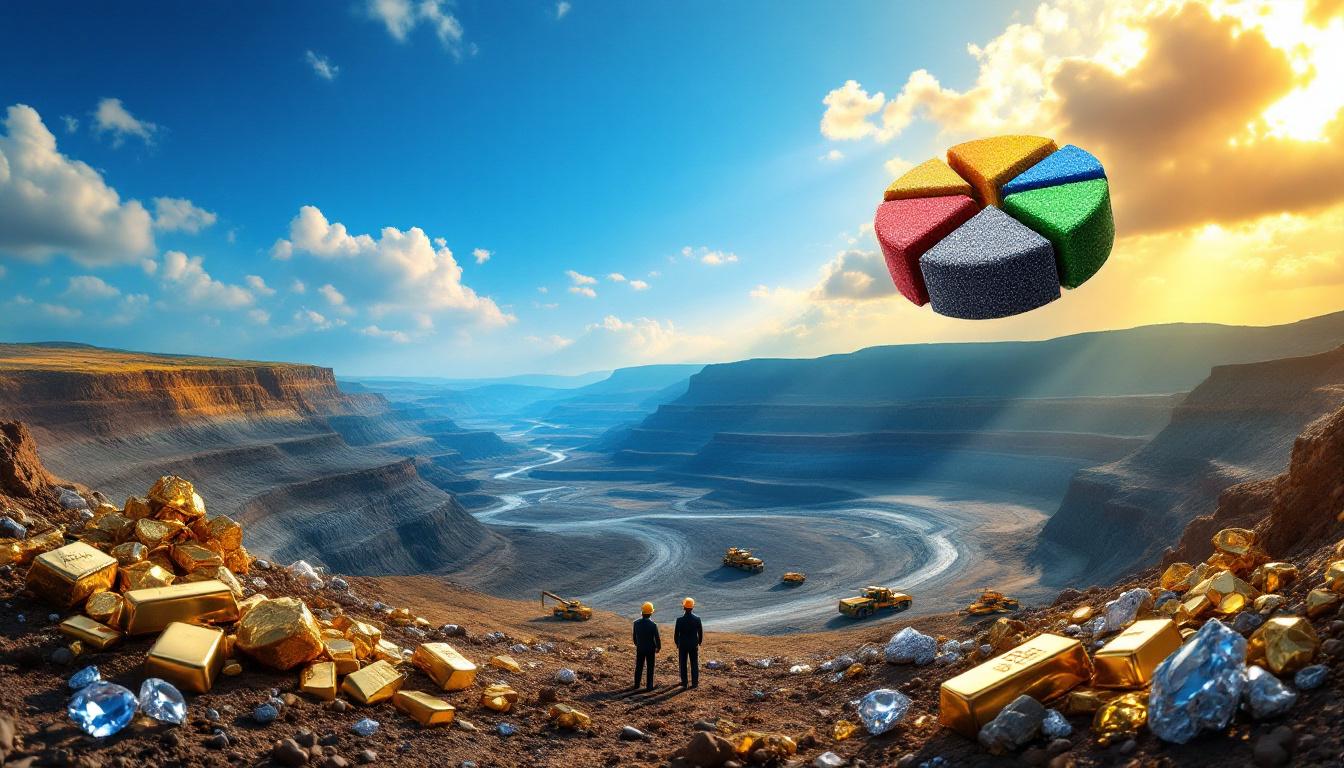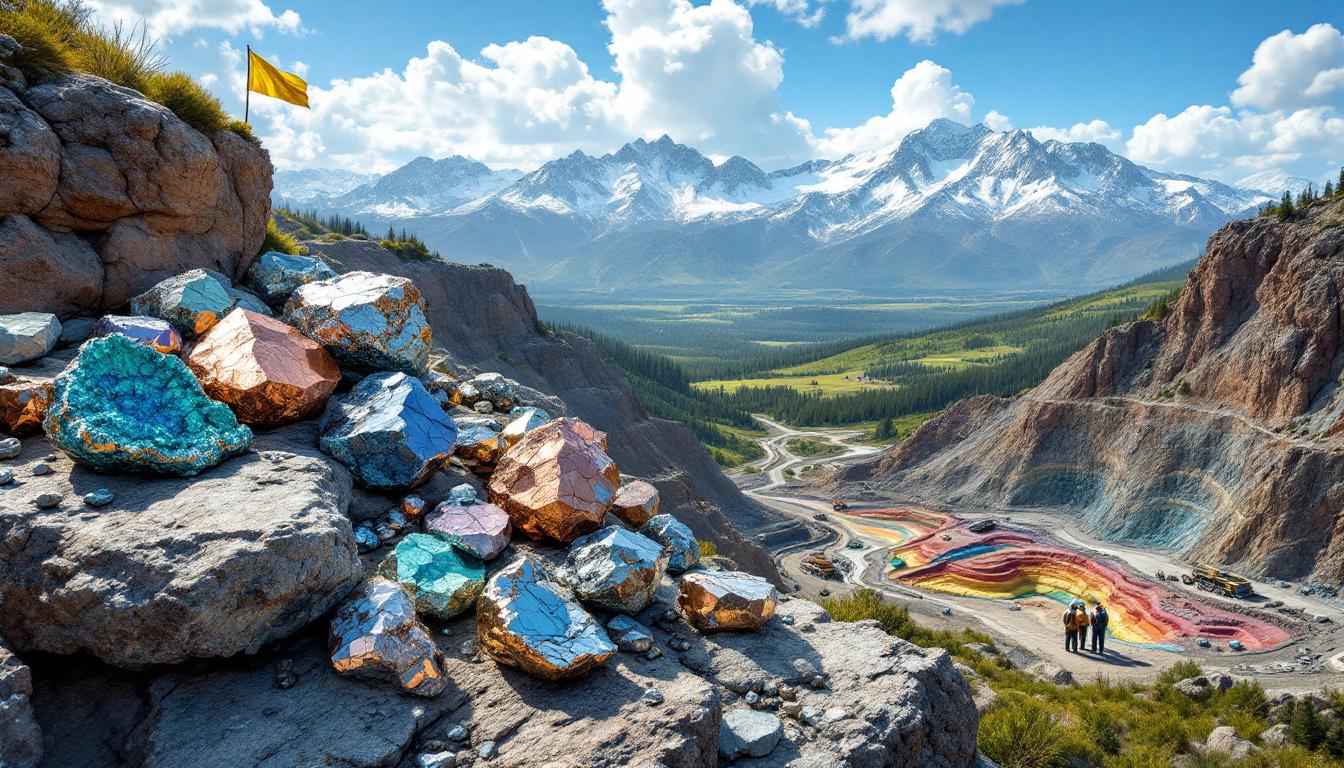Steenkampskraal Mine Achieves Critical Regulatory Milestone with NNR Approval
The Steenkampskraal monazite mine in South Africa has reached a pivotal milestone in its journey toward full operations, with the National Nuclear Regulator (NNR) accepting a crucial authorization change request. This development accelerates the mine's path to becoming a significant player in the global rare earth supply chain, particularly as nations seek alternatives to Chinese dominance in this critical minerals energy transition.
The Strategic Value of Steenkampskraal's Rare Earth Resources
Located in the Western Cape of South Africa, Steenkampskraal stands as one of the world's most promising rare earth element deposits. The mine contains high-grade monazite ore, which is exceptionally rich in rare earth oxides compared to most global deposits.
The mine's strategic importance is magnified by growing global demand for rare earth elements across technology, renewable energy, and defense sectors. With estimated concentrations of 15-20% total rare earth oxides (REOs) – significantly higher than the global average of 2-8% – Steenkampskraal represents a potentially transformative resource in a market desperately seeking supply diversification.
As Steenkampskraal Chairperson Enock Mathebula notes, the mine is "positioned to become a leader in responsible rare earth mining in South Africa, enhancing credibility with investors and stakeholders alike."
What Does the NNR Acceptance Mean for Steenkampskraal?
The National Nuclear Regulator's acceptance of Steenkampskraal Holdings' authorization change request regarding prospective worker safety assessment marks a transformative moment for the project. This regulatory milestone, achieved on June 10, 2025, validates the mine's comprehensive safety protocols and accelerates its path toward active production.
Breaking Down the Regulatory Achievement
This NNR approval enables Steenkampskraal to proceed with multiple critical operational steps:
- Formal engagement with turnkey processing and mining contractors
- Design completion for production facilities
- Procurement of specialized rare earth processing equipment
- Manufacturing initiation for customized components
- Implementation of radiation safety monitoring systems
The approval is particularly significant because monazite ore naturally contains thorium, requiring specialized handling and safety protocols under nuclear regulatory frameworks. The NNR's acceptance confirms Steenkampskraal's compliance with these stringent requirements.
Why This Approval Is Transformative
According to SMM Chairperson Enock Mathebula, "The importance of this NNR acceptance cannot be overstated. It is a pivotal achievement that validates SMM's safety protocols, accelerates its path to production and reinforces its role as a key player in the global rare earth supply chain."
This regulatory milestone differentiates Steenkampskraal from many other rare earth projects globally that struggle with complex compliance requirements. The IAEA's strict guidelines for thorium management in mining operations (IAEA, 2023) represent a significant hurdle that Steenkampskraal has now cleared.
"This authorization represents a pivotal step in our journey to operational readiness. It enables us to transition from planning to physical implementation, while maintaining our unwavering focus on safety, sustainability and strategic execution." – Graham Soden, SMM CEO
How Does This Fit Into Steenkampskraal's Broader Reactivation Strategy?
The mine has been under care and maintenance but made the strategic decision in 2024 to resume operations. This latest NNR acceptance builds upon three previous regulatory submissions that have collectively established the framework for Steenkampskraal's return to active status.
The Reactivation Timeline and Progress
Since deciding to bring the mine out of care and maintenance in 2024, Steenkampskraal has:
- Secured approximately $50 million in funding from strategic investors
- Submitted four separate authorization change requests to the NNR
- Received acceptance for all critical regulatory submissions
- Established preliminary offtake agreements with non-Chinese processors
- Implemented planning for radiation monitoring and worker safety
- Generated significant interest from potential investors and offtakers globally
The company has leveraged its historical production data from previous operations to streamline the reactivation process. This institutional knowledge provides Steenkampskraal with advantages compared to greenfield rare earth projects, which typically face 8-10 year development timelines.
Moving From Planning to Implementation
The NNR approval initiates a six-month design phase, followed by equipment procurement and installation. Graham Soden emphasized that this transition from planning to implementation has "sparked keen interest from investors and offtakers globally" who recognize the strategic value of non-Chinese rare earth sources.
Unlike many rare earth projects that struggle with financing, Steenkampskraal's progress with regulatory approvals strengthens its position with investors. The company has established a three-phase development approach, with initial production targeted within 18 months of the NNR approval.
What Makes Rare Earth Mining Projects Like Steenkampskraal So Important?
The Critical Role of Rare Earth Elements in Modern Technology
Rare earth elements are essential components in numerous applications that power the modern economy:
- Clean Energy: NdFeB permanent magnets in electric vehicles (containing neodymium, praseodymium, dysprosium) and wind turbines
- Electronics: Europium, terbium, and yttrium for displays and touchscreens
- Defense Systems: Samarium-cobalt magnets in precision-guided missiles and radar systems (U.S. Department of Defense, 2024)
- Medical Technology: Gadolinium for MRI contrast agents
- Energy Efficiency: Yttrium, europium, and terbium for LED lighting
Despite their name, rare earth elements aren't actually rare in the Earth's crust – but economically viable, concentrated deposits outside of China are exceptionally scarce. This reality has created significant supply vulnerabilities for Western manufacturers.
Supply Chain Security and Strategic Importance
With China controlling approximately 85% of global rare earth processing capacity (USGS, 2024), new sources outside this dominant supply chain are strategically valuable for:
- Reducing dependency on a single source region
- Ensuring supply chain resilience for critical industries
- Supporting national security objectives in Western nations
- Creating price stability in volatile markets
Recent price fluctuations underscore this volatility – NdPr oxide prices reached $120/kg in 2024 before stabilizing around $95/kg (Argus Media, 2025). Such unpredictability hampers investment in technologies that require these materials.
Industry Insight: The rare earth supply chain isn't just about mining – it's the processing capacity that represents the true bottleneck. China's dominance in separation and refining technologies creates a significant barrier to market entry.
What Safety Considerations Are Central to Steenkampskraal's Operations?
Nuclear Regulatory Compliance Requirements
The NNR's involvement highlights the specialized safety requirements for monazite mining, which naturally contains thorium and other radioactive elements requiring careful management. Steenkampskraal's monazite contains approximately 5-7% thorium, necessitating comprehensive radiation protection measures.
Key safety aspects include:
- Radiation Protection: Worker dosimetry monitoring and exposure limits per IAEA guidelines
- Environmental Controls: Continuous air and water monitoring systems around processing facilities
- Specialized Protocols: Dust suppression systems and personal protective equipment requirements
- Waste Management: Tailings storage facility design with multi-layer containment systems
- Emergency Response: Comprehensive planning and regular drills for potential incidents
These requirements align with the IAEA's Radiation Protection and Safety Guidelines (2023), which establish international best practices for managing naturally occurring radioactive materials (NORM) in mining operations.
Balancing Production Goals with Safety Standards
Steenkampskraal's approach demonstrates how modern mining operations must integrate production efficiency with rigorous safety standards. The company has established a 12-week comprehensive training program for all operational staff prior to production commencement.
This balanced approach includes:
- Implementing remote monitoring technologies to minimize direct worker exposure
- Establishing partnerships with radiation safety experts from South Africa's nuclear sector
- Developing specialized operational procedures for each processing stage
- Creating transparent reporting mechanisms for regulatory compliance
- Engaging with local communities to address concerns about radioactive materials
Steenkampskraal's approach to radiation management can be contrasted with Lynas Corporation's rare earth operations in Malaysia, which faced significant regulatory challenges related to radioactive waste management. Steenkampskraal's proactive engagement with the NNR aims to avoid similar complications.
What Impact Will Steenkampskraal Have on the Global Rare Earth Market?
Potential Production Capacity and Market Significance
When fully operational, Steenkampskraal has the potential to produce approximately 2,700 tonnes of rare earth oxides annually, representing 5-7% of global non-Chinese supply (Adamas Intelligence, 2025). This production would significantly impact key rare earth markets:
| Element | Potential Market Share | Primary Applications |
|---|---|---|
| Neodymium | 3-4% of global supply | EV motors, wind turbines |
| Praseodymium | 4-5% of global supply | NdFeB magnets, glass coloring |
| Dysprosium | 2-3% of global supply | High-temperature magnets |
| Terbium | 6-8% of global supply | Phosphors, magnets |
This production capacity would make Steenkampskraal one of the most significant non-Chinese sources of heavy rare earths, which are particularly critical for high-performance magnets and defense applications.
Investment and Economic Development Implications
The advancement of the Steenkampskraal project aligns with South Africa's 2024 critical minerals strategy, which targets creation of 2,000 direct jobs in the rare earth sector. The project's economic impact includes:
- Creation of approximately 350 direct mining and processing jobs
- Development of specialized technical skills in rare earth processing
- Establishment of supply chain infrastructure in the Western Cape
- Potential for downstream processing opportunities
- Foreign direct investment in South Africa's mineral sector
Beyond local economic impacts, Steenkampskraal's development represents a strategic investment opportunity in a sector dominated by China. The growing demand for rare earths – projected to increase by 8-10% annually through 2030 (Adamas Intelligence, 2025) – positions early producers like Steenkampskraal to capture premium pricing as manufacturers seek supply diversification.
What Next Steps Will Steenkampskraal Take Toward Production?
With this regulatory milestone achieved, Steenkampskraal's path to production follows a structured timeline:
- Q3-Q4 2025: Finalization of contracts with processing and mining contractors
- Q4 2025 – Q1 2026: Completion of detailed engineering designs for surface operations
- Q1-Q2 2026: Procurement of specialized separation equipment from European suppliers
- Q2-Q3 2026: Implementation of worker safety protocols in line with NNR requirements
- Q4 2026: Commissioning of initial processing capacity
- Q1 2027: Target for first rare earth concentrate production
The company has allocated approximately $85 million for this initial phase, with an additional $120 million earmarked for expansion of downstream processing capabilities in subsequent years.
Technical Challenges Ahead
Despite the regulatory progress, Steenkampskraal faces several technical challenges common to rare earth projects:
- Establishing efficient separation processes for individual rare earth elements
- Managing radioactive waste streams from thorium and uranium
- Developing cost-effective processing routes for heavy rare earths
- Creating products that meet the exacting specifications of magnet manufacturers
- Balancing production of different rare earth elements based on market demand
How Does This Development Reflect Broader Trends in Critical Minerals?
The Growing Focus on Secure Supply Chains
Steenkampskraal's progress reflects the increasing global emphasis on developing diverse sources of critical minerals. This trend is driven by:
- Growing recognition of supply chain vulnerabilities exposed during recent global disruptions
- National security concerns regarding dependence on potentially adversarial nations
- Rapid growth in demand for rare earths in clean energy technologies
- ESG considerations favoring responsibly sourced materials
- Government initiatives like the U.S. Critical Minerals Strategy and EU Raw Materials Act
The International Energy Agency (IEA) projects that demand for rare earths in clean energy technologies alone will increase by 350-400% by 2040, underscoring the urgency of developing new supply sources.
South Africa's Emerging Role in Critical Minerals
Steenkampskraal's advancement positions South Africa to play a more significant role in global rare earth supply chains. While South Africa has long been known for platinum group metals and chromium, its rare earth potential has been underexplored compared to countries like Australia, which has successfully developed projects like Lynas Corporation's Mt. Weld mine.
South Africa's advantages in the rare earth sector include:
- Established mining infrastructure and expertise
- Existing regulatory frameworks for handling radioactive materials
- Strategic location for serving European and Asian markets
- Potential for vertical integration with the country's manufacturing sector
- Government support through the defence‑critical minerals strategy
"South Africa has the potential to become a significant player in the rare earth supply chain, with Steenkampskraal representing just the first step in developing this strategic resource." – Enock Mathebula, Steenkampskraal Chairperson
FAQs About Steenkampskraal and NNR Acceptance
What are rare earth elements and why are they important?
Rare earth elements comprise 17 metallic elements that, despite their name, are relatively abundant in the Earth's crust but rarely found in concentrated, economically viable deposits. They're crucial for numerous high-tech applications including permanent magnets, catalysts, batteries, and electronics.
The most commercially significant rare earths include neodymium, praseodymium, dysprosium, and terbium, which are essential components in the NdFeB magnets used in electric vehicles and wind turbines. A typical electric vehicle contains approximately 1-2 kg of rare earth elements, primarily in its motor magnets.
Why is the NNR involved in rare earth mining regulation?
The National Nuclear Regulator oversees Steenkampskraal because monazite, the primary ore at the mine, naturally contains thorium (5-7%) and trace uranium, which are radioactive elements that require specialized handling, processing, and waste management protocols.
Unlike conventional mining operations that fall solely under mining regulations, rare earth projects involving radioactive materials must comply with additional nuclear safety standards. This dual regulatory framework adds complexity but ensures comprehensive protection for workers, communities, and the environment.
How does Steenkampskraal compare to other rare earth projects globally?
Steenkampskraal is notable for its high concentration of rare earth elements within its monazite deposits, potentially making it one of the more economically viable rare earth projects outside of China. Its advancement represents a significant development in diversifying global rare earth supply chains.
| Project | Location | Stage | Key Advantage | Challenge |
|---|---|---|---|---|
| Steenkampskraal | South Africa | Development | High REO concentration (15-20%) | Thorium management |
| Mountain Pass | USA | Production | Established infrastructure | Limited heavy REEs |
| Mt. Weld | Australia | Production | Secure supply chain | Processing complexity |
| Nolans | Australia | Development | Significant scale | Water access |
| Lofdal | Namibia | Development | Heavy REE focus | Processing technology |
What challenges do rare earth mining operations typically face?
Rare earth mining projects often encounter challenges including:
- Complex processing requirements separating individual elements
- Environmental management of radioactive components
- Technical difficulties achieving high purity levels required by manufacturers
- Fluctuating market prices driven by Chinese supply policies
- Competition from established producers with integrated supply chains
- Securing offtake agreements with downstream manufacturers
- Balancing production of different rare earth elements based on market demand
Steenkampskraal's approach to addressing these challenges includes focusing initially on concentrate production while developing partnerships for downstream processing, allowing for a phased investment approach that reduces initial capital requirements and navigates complex mining permitting insights effectively. This contrasts with recent complications seen in similar operations like the uranium mining halt in Namibia that faced regulatory hurdles.
Disclaimer
This article contains forward-looking statements regarding the development of the Steenkampskraal mine and its potential impact on rare earth markets. Actual results may vary based on technical, regulatory, market, and financial factors beyond the company's control. Investors should conduct their own due diligence before making investment decisions related to rare earth mining projects.
Wondering How to Spot the Next Mineral Discovery Before the Market?
Discover how to gain a market-leading edge with real-time alerts on significant ASX mineral discoveries through Discovery Alert's proprietary Discovery IQ model, transforming complex mineral data into actionable investment opportunities. Explore why historic discoveries generate substantial returns by visiting Discovery Alert's dedicated discoveries page and begin your 30-day free trial today.




